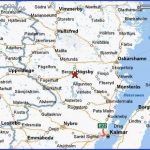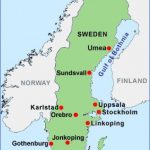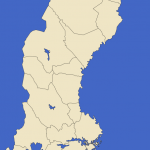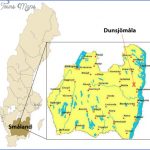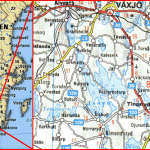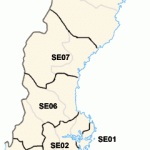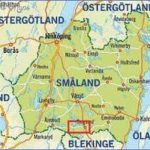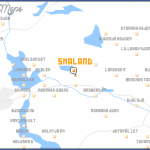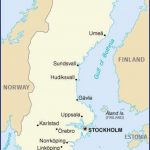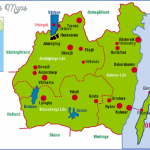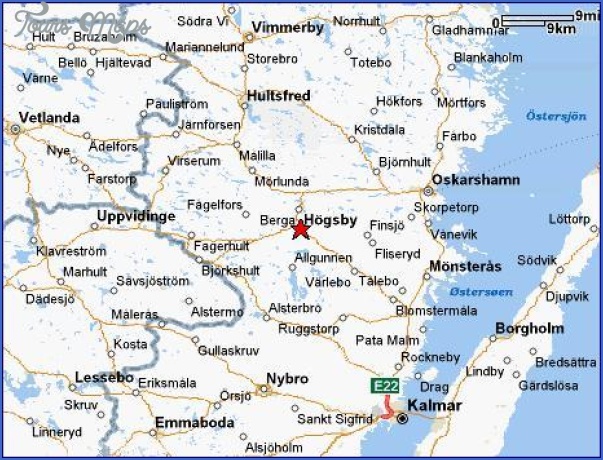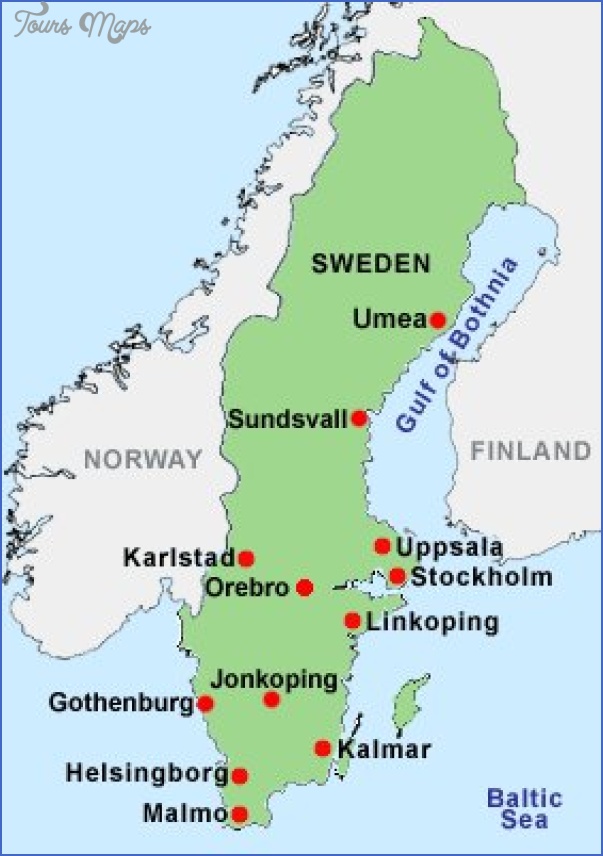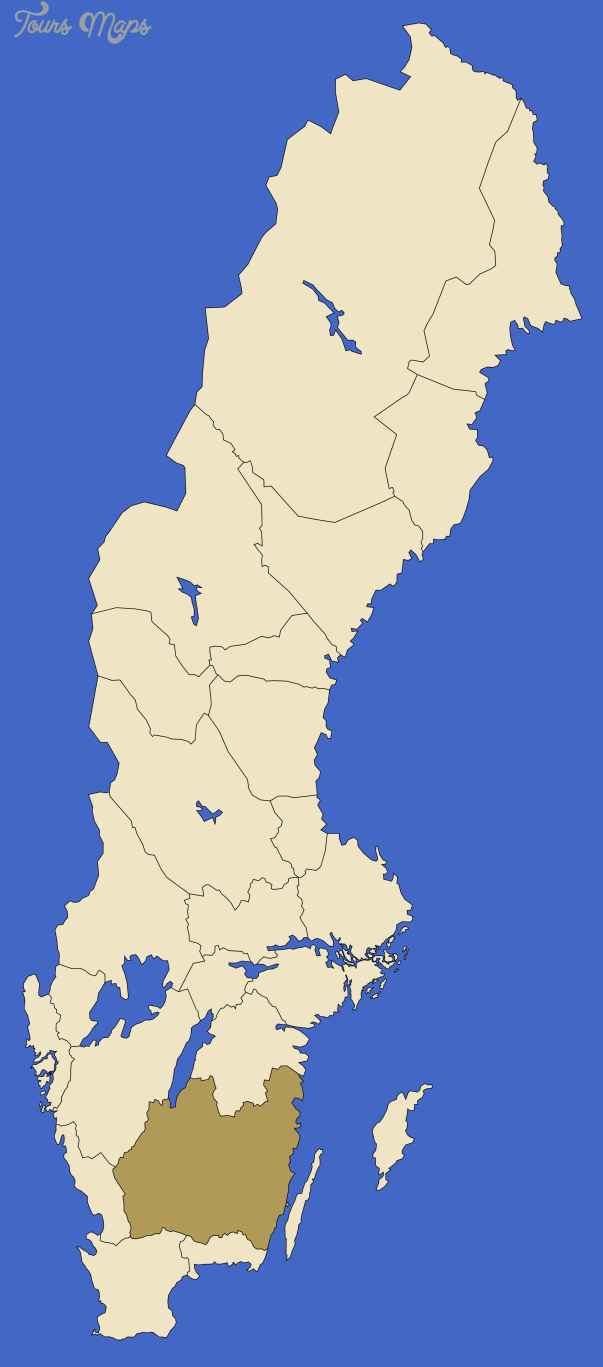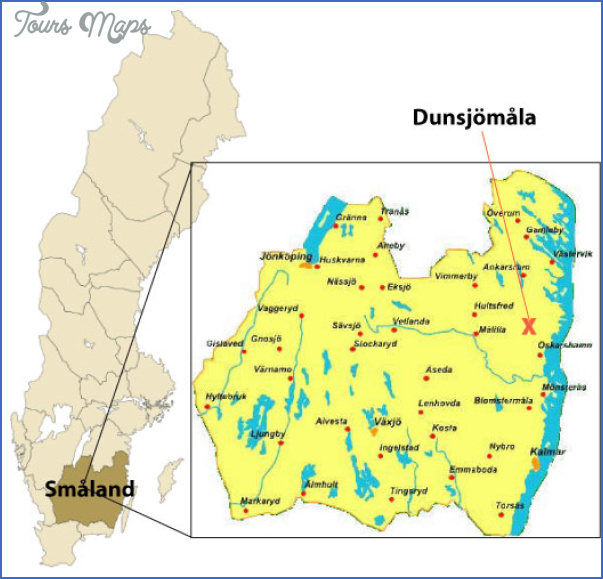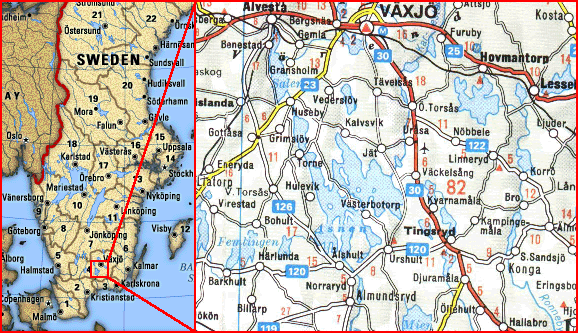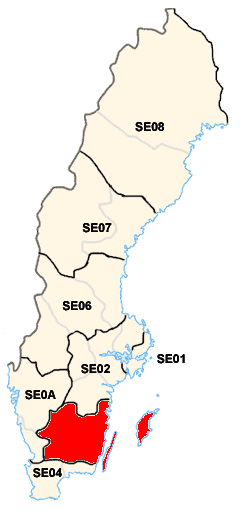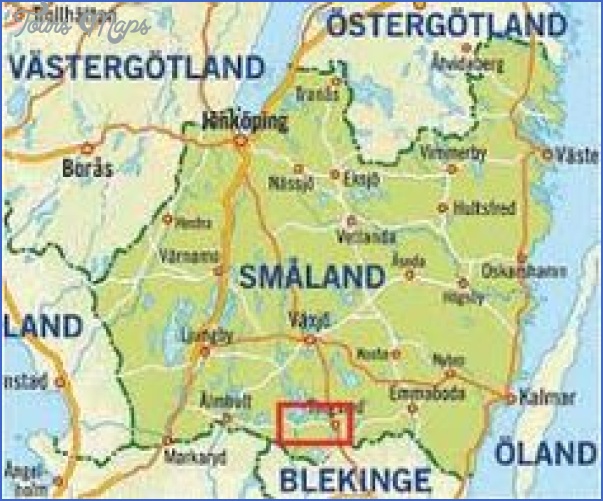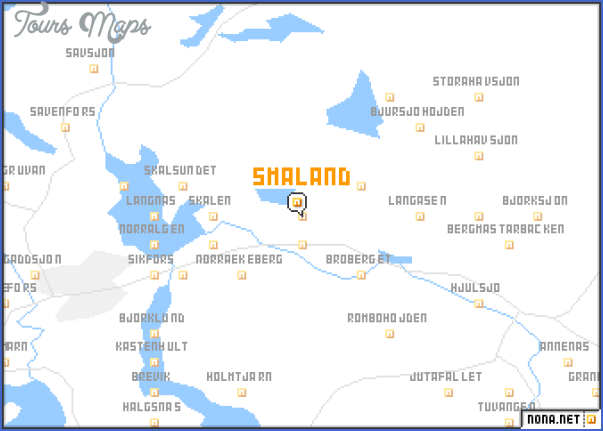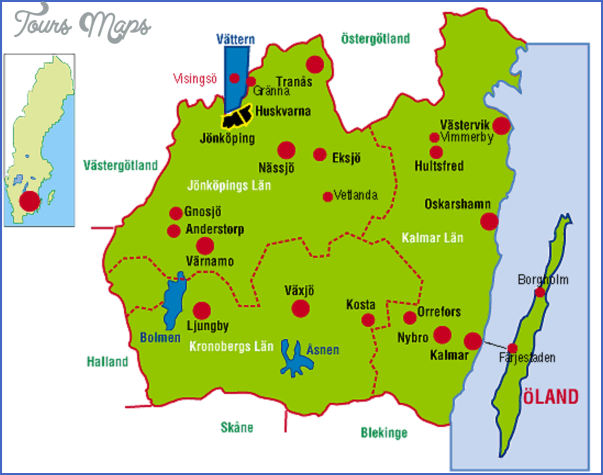Provinces: Jonkopings Ian, Kronoborgs Ian, Kalmar Ian, Hallands Ian.
Smaland is notable among the regions of Sweden for its many lakes. The uplands in the northern part of the region slope down toward the S and SW and give way to a plain. Here begins the endless forest celebrated in so many Swedish songs. The countless rocky hills, smoothed and rounded by the glaciers of the Ice Age, with lakes and flat expanses of peat-bog between them, are characteristic of Smaland. The barren ground is covered with mosses and lichens.
Until the 18th cž the population of Smaland depended almost exclusively on agriculture for their subsistence, but the stony morainic terrain yielded poor returns. Many peasants sought employment in factories to eke out a meagre income. Many were unable to make a living, and there was a great emigration of young people from Smaland between 1750 and 1850.
The mining of iron ore in SmSland began in the 15th c. with Taberg the principal mining area. There was a great surge of activity in ironworking when foreign smiths came to SmSland and passed their skills to the local people. In the middle of the 1 9th c. however, the woodworking and glass industries moved into first place. The Swedish glass industry was established when Gustavus Vasa brought skilled glass-blowers from Venice in 1556. In time over 200 glassworks were established, more than half of them in the SE corner of the Smiland forest region: hence the name of Glasriket (Glass Kingdom), given to the stretch of forest between Nybro and Vaxjo. Most of the glassworks were originally established as iron foundries, in the days when bog ore (impure iron ore) was still being used.
Orrefors glass
A relic of these early days can be seen in the old hammer-mill in Orrefors (Sand-grens Pensionat, 12 b.), 1 7 km (1 0 miles) from Nybro. In this village of about 900 inhabitants, an iron foundry using bog ore was still working in the latter part of the 1 9th c. The glassworks here were established in .1898 and now belong to the Orrefors Glass Company, founded in 1937. Originally producers of window-glass and glass for industrial use, the company later switched to lamps and decorative glassware. With the Sandvik Glass Company in Hovmantorp, it also produces domestic glass for everyday use. The Orrefors works can claim to have pioneered the manufacture of the famous Swedish glassware, having employed the first designers in this field in 1915. This marked the beginning of what is known in Sweden as the Gate-Hald period, making Swedish glass famous around the world. Gate and Hald were two of the designers who, along with others like Lindstrand, Landberg, Palmqvist, Ohrstrom and Lundin, gave Orrefors glass its artistic form. The Orrefors works has a museum (display of glass from the Gate-Hald period). Oskarshamn (pop. 28,000; Pontus Hotell, 32 BIS Jungfrun, 60 b.), founded only 1 00 years ago, is a port and industrial town on the Doderhultsvik, an inlet on the Baltic coast between Kalmar and Vastervik. It was the birthplace of the Swedish doctor and author, Axel Munthe (1857-1949), whose Story of San Michele was a best-seller in many languages. It is a town of many ups and downs, reflecting its hilly topography. At Nos. 1 8-20 Hantverksgatan is the House of Culture, containing the Seafaring Museum, the Municipal Library and an art gallery displaying SmSland wood-carving and works by the sculptor, Axel Pettersson (1868-1925), born in Doder-hult, near Oskarshamn. On a hill in the Municipal Park is a neo-Gothic church (1 874-6). Opposite the harbour is the well-preserved Fnyket quarter of little wooden houses. On the way to Doder-hultsdalen, it is worth visiting the local museum in Frederiksberg Herregard, with its beautiful 18th c. great hall and the municipal reception rooms. From LSnga Soffan (the Long Bench), in the old seamen’s quarter around the harbour, there is a fine view. 20 km (12 miles offshore), half-way between the mainland and the island of Oland, lies the rocky island of Bla Jungfrun, the Blue Maiden (alt. 85 m (280 ft): National Park). In summer there are daily ferry services to Byxelkrok on Oland and Visby and Klintehamn on Gotland. Varnamo (Stadshotellet, 127 Turis-ten, 1 8 b.), on the banks ofthe Lagi, is the capital of southern SmSland. Although known as a meeting-place of the ting (assembly) in 1236, and as a trading station in 1620, the town failed to develop. In 1 859, it had still no more than 300 inhabitants. Since then, the development of industry and the incorporation of neighbouring places has brought its population to 30,000. Some 60% of the population are engaged in crafts and industry, especially the furniture industry, notable in the annual Swed-Expo trade fair. In the middle of the town is the Apladal nature park, with the Folk Mu,-seum (local way of life and traditions). On Sundays and public holidays, in summer, an old-time railway operates over the 1 5 km (1 0 mile) stretch of line between Bor and Osbruk. 25 km (1 5 miles) S of Varnamo is an Automobile Museum, with motorcycles, tractors and an aircraft, as well as cars. 25 km (1 5 miles) NE of Varnamo is a nature reserve around the ruins of the 12th c. Nydala Abbey, near Kavsjomyren.
Smaland Sweden Map Photo Gallery
Maybe You Like Them Too
- The Best Cities To Visit in The World
- World’s 10 Best Places To Visit
- Coolest Countries in the World to Visit
- Travel to Santorini, Greece
- Map of Barbados – Holiday in Barbados

